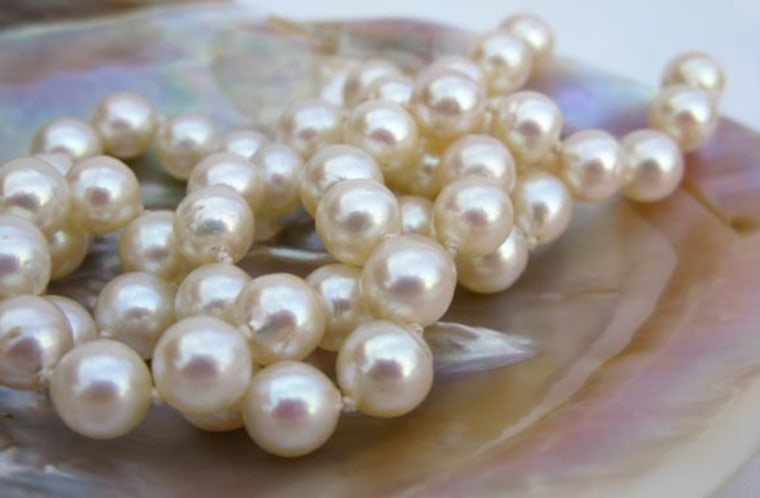The iridescent beauty of pearl and nacre, the material found inside the shells of clams, oysters and other mollusks, would likely be impossible without two new proteins recently discovered by Japanese scientists.
The discovery could allow for the production of larger pearls in less time.
Pearl and nacre, also known as mother of pearl, have been used as decorations for millennia. In recent years, scientists have discovered the physical structure responsible for their valuable iridescence, the minerals that make up those structures, and the proteins that hold those minerals together.
What science has failed to find, however, are the proteins that actually produce pearls. The Japanese researchers set out to find those missing proteins.
By infecting Japanese pearl oysters with an engineered virus specifically designed to reduce the amount of the newly discovered proteins, the scientists essentially stopped pearls from forming.
"This is really fundamental research," said Nils Kroger, a scientist at the University of Georgia who wrote an accompanying article in the journal Science. "The mollusk shells looked much more disorganized, not the nice structured layers you would normally expect."
By washing nacre with distilled water and using gold nanoparticles tipped with antibodies, the Japanese scientists discovered two new proteins, Pif 80 and Pif 97, which appeared to be crucial for building nacre.
Pif 97, the scientists suspect, creates a basic template of what the nacre should look like using chitin, the same material lobsters and crayfish use to build their exoskeleton. Pif 80 binds calcium and bicarbonate to the chitin, finishing the nacre.
To test this theory that these proteins actually produced pearls, the Japanese scientists tried to eliminate the two proteins from Japanese pearl oysters. Using a genetically engineered virus, the scientists were able to reduce the amount of Pif 80 and Pif 97 by about 40 percent when compared with control oysters.
Six days later, the oysters had produced virtually no new nacre. The nacre that they did manage to develop was abnormal and misshapen on a microscopic level. To the human eye, the lackluster structure wouldn't have been apparent.
"If we rear the oyster for a longer period, the luster of the nacreous layer might be decreased, because the surface of the nacreous layer becomes more irregular," said Hiromichi Nagasawa, a scientist at the University of Tokyo and co-author of the Science paper.
Although discovering the proteins responsible for producing pearls is a good start, more work needs the work can be applied. If eliminating Pif 80 and Pif 97 stopped nacre formation, then increasing the amount of the two proteins should speed up pearl production — a possibility the Japanese scientists are currently exploring.
